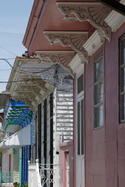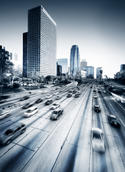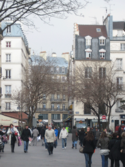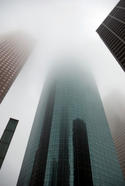The world has embarked upon a campaign to reduce greenhouse gas (GHG) emissions. This is a serious challenge that will require focused policies rooted in reality. Regrettably, the political process sometimes falls far short of that objective. This is particularly so in the states of California and Washington, where ideology has crowded out rational analysis and the adoption of what can only be seen as reckless “cowboy” policies. read more »
Urban Issues
The Chevy Chase Club: Real Estate And Racism
A website that focuses on land use, and on urban and suburban design is a particularly appropriate forum in which to discuss country clubs – those large occupiers of choice real estate – and how the social structure of country club membership fosters, institutionalizes and perpetuates racial attitudes that are decades behind the attitudes reflected in all other elite American institutions. read more »
Cash, Not Pretense: An Entrepreneur's Guide to the Credit Crisis.
Compared with most businessmen, 41-year-old Charlie Wilson has some reason to like the economic downturn. President of Salvex, a Houston-based salvage firm he founded in 2002, Wilson has seen huge growth in the bankruptcy business over the past year. It is keeping his 10-person staff, and his 55 agents around the world, busy. read more »
Restoring the Real New Orleans
Like so many others, I have long been a visitor to New Orleans. In my case, the first visit was 1979, when we studied the city to influence the design of the new town of Seaside. I have been back often – for New Orleans is one of the best places to learn architecture and urbanism in the United States. My emphasis on design might seem unusual, but it shouldn't be, for the design of New Orleans possesses a unique quality and character comparable to the music and the cuisine that receives most of the attention.
During those visits, sadly, I did not get to know the people – not really. The New Orleanians I met were doing their jobs but not necessarily being themselves. Such is the experience of the tourist. read more »
Millennial Perspective: The Global View
In the past few years, as my millennial generation has entered college, global and international studies have started to creep onto the list of the ten most popular majors, a list that historically hasn’t changed much. I’m a High School senior, and at a couple of the universities I’ve looked into, Admissions Officers have mentioned that it’s become a top choice – if not the top choice – among applicants as a major field of study. read more »
Different Shades of Green
Last month marked the 15th anniversary of the settlement of Plotkin vs. General Electric, the landmark “greenwashing” lawsuit I filed in 1993. At the time, GE was misleading consumers by selling phony lookalike energy efficient light bulbs that were in fact just old fashioned incandescent wolves in green packaging.
I took no money from the case. But I required G.E. to make labeling changes and to pony up $3.25 million dollars in consumer refunds and donations to environmental and public service groups. The labeling changes made it easier for the manufacturers of real energy efficient light bulbs, which were just then entering the marketplace, to distinguish their products on the shelves. read more »
How the Financial Crisis Threatens Localism
By Richard Reep
As in many places, the poor economy is forcing many families in affluent Winter Park, Florida to make some necessary adjustments. One of the most basic adjustments relates to shopping for food and staples. In better times, Winter Park was ruled by two Publix supermarkets and a Whole Foods. Grocery-cart conversation among friends became a common event; now this smooth, middle-class lifestyle pattern has been disrupted. read more »
PARIS: Urban Museum Amidst a Suburban Sea
I arrived in Paris on March 1 for my annual visiting professor assignment at the Conservatoire National des Arts et Metiers. Again, I have taken a flat (apartment) in the 1st arrondissement (district) in the heart of the ville de Paris, one of the world’s great pedestrian expanses. It is also one of the great virtual experiences – a place oddly disembodied from its setting.
The flat is just a couple of doors to the right on the first perpendicular street in the picture below, which was taken at the entrance of the Chatalet-Les Halles Metro-RER station, less than 200 yards away. read more »
How Houston Will Weather The Recession
In the past year or so, traveling the various geographies of this country has become increasingly depressing. From the baked Sun Belt suburbs to the green Valhallas of Oregon and the once luxurious precincts of Manhattan, it is hard to find much cheer--at least from entrepreneurs--about the prospects for the economy.
Until recently Texas, and particularly Houston, has been one of the last bastions of that great traditional American optimism--and for good reason. Over the past few years, Houston has outperformed every major metropolitan area on virtually every key economic indicator. read more »
- Login to post comments
Is Obama's Urban Focus Bad News for the Rest of the Countryside?
To much of the media, Barack Obama is the ultimate dream president, a sophisticated urbanite whose roots lie in top-tier academia and big-city politics. This asset could also become a glaring weakness, blinding him to the fundamental aspirations for smaller places and self-government that have long animated the American experience. read more »






















